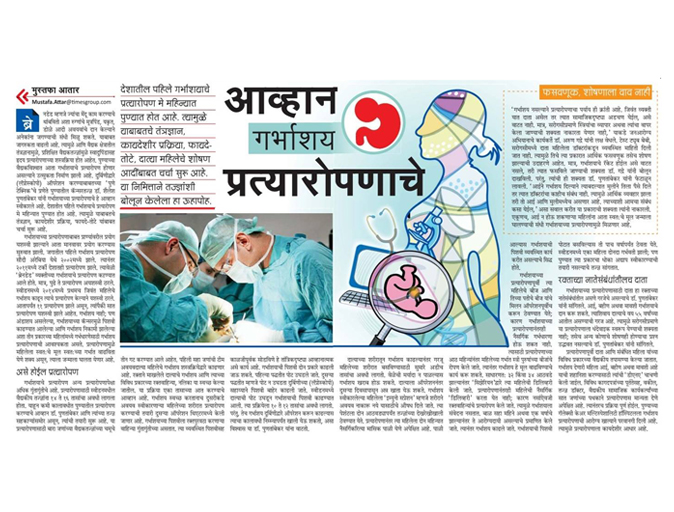News about Dr. Shailesh Puntambekar & Galaxy Care Hospital
1st Womb Transplant In India

Brain-dead patients which means the brain stops working. So, donating the kidney, liver, eyes, etc. of these patients can put life to others. Science has even made the transplantation of pancreas and heart possible. Now for the first time in India, extremely rare womb transplant surgery will be performed in Pune at Galaxy Care Hospital. The rare surgery will be performed by internationally acclaimed surgeon Dr. Shailesh Puntambekar who is known for the Pune Technique. Dr. Shailesh Puntambekar, medical director at Galaxy Care Hospital, has decided to take this challenge and make it a success as out of 25 attempted surgeries around the world, only 10 transplants has been successful. India’s 1st womb transplant will be performed in the month of May at Galaxy Care Hospital. Womb transplant was tried and tested successful on animals earlier and then started performing the surgery on the patients. World’s 1st womb transplant surgery was performed in 2002 in Saudi Arabia. Thereafter, the 1st successful womb transplant from a live donor was performed in Sweden in 2012. Womb transplant is performed on women who are born without a uterus, or on those who have lost their uterus to a disease. This surgery enables the women to get pregnant and bear children. This is how it will be performed Womb transplant is more complicated as compared to the other transplants. The surgery performed in Sweden took 14 to 16 hours to complete the whole process. The challenge before Dr. Shailesh Puntambekar and team is to complete the surgery successfully in less time and they are preparing themselves accordingly. The team of surgeons is divided into three groups. 1st team of 6 will perform the surgery on womb donor. The womb and linked veins will be cleaned. This process should get completed in 1 hour. While cleaning the womb is in process, simultaneously, a team will be making the preparations of womb transplant in the operation theater. Separating the veins that are linked to the womb carefully is a complicated task. The womb need to be taken out carefully along with the veins. Womb can be separated in two ways. One way to do it is by cutting through the abdominal wall. The other way to do it is with the help of Laparoscopy method. In Sweden, the surgery was performed by the 1st way and thus took 10 to 12 hours. Whereas Dr. Shailesh Puntambekar is confident that with Laparoscopy method, the time can be cut down easily. Transferring the womb from donor’s body to the patient’s body takes around 2 hours 30 minutes. Not following the time limits might damage the womb. Donor can eat food from the next day of operation. The women to whom the womb is transferred is given ‘Immuno Suppression’ (a medicine that is given so that the body should not reject the new transferred womb). The patient is kept under observation for 2 weeks. Within two months after womb transplant, women’s menstrual cycle is expected to start and that indicates proper functioning of the womb.












